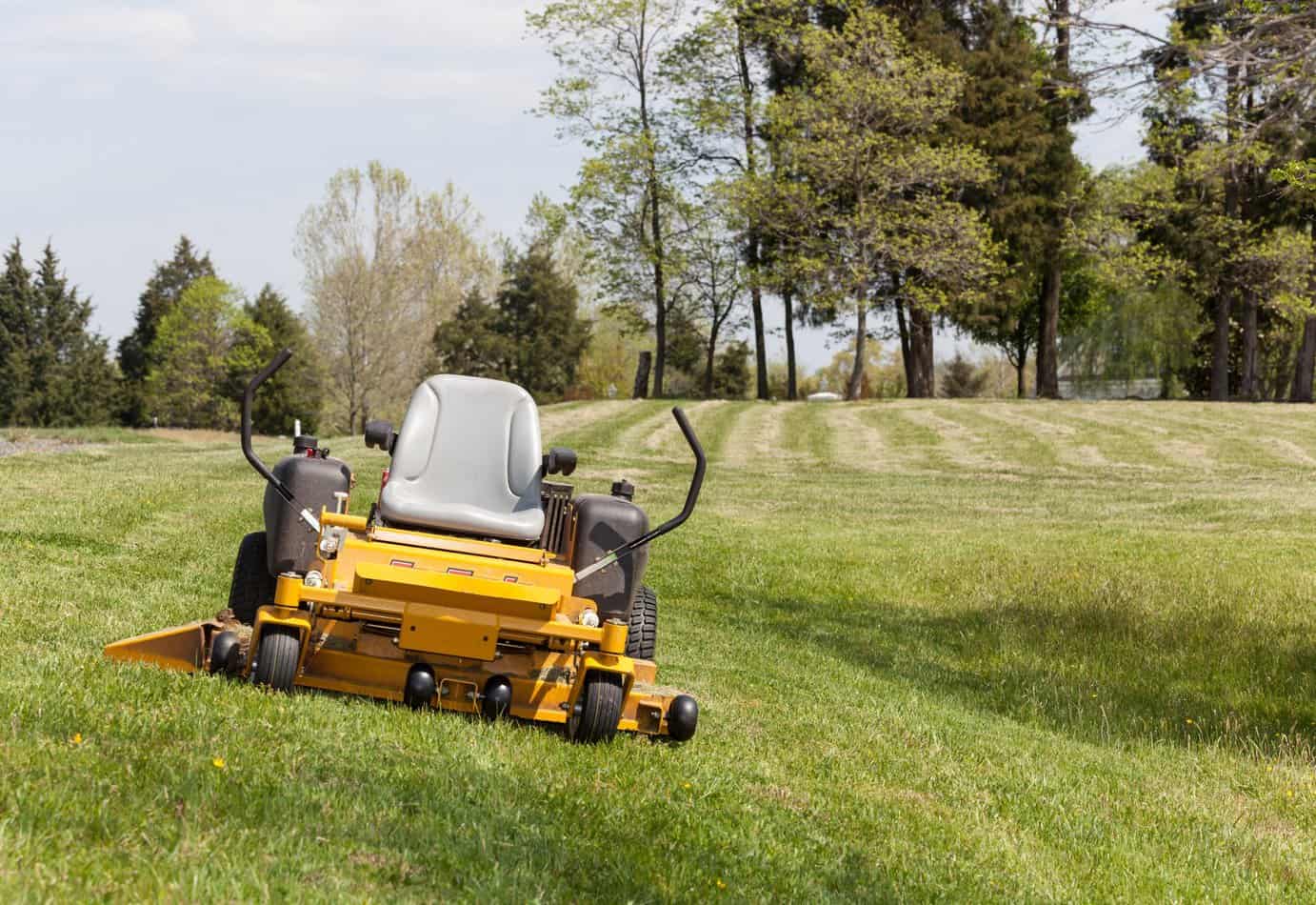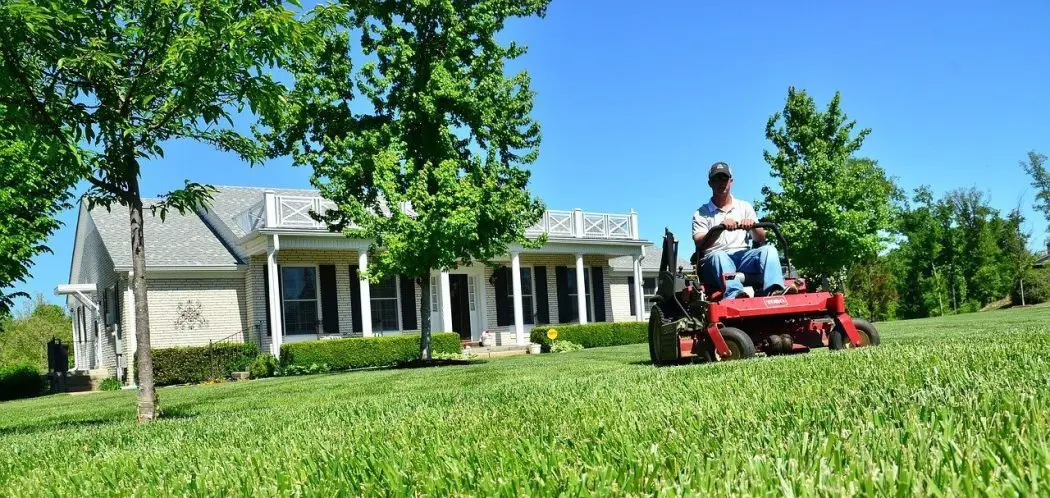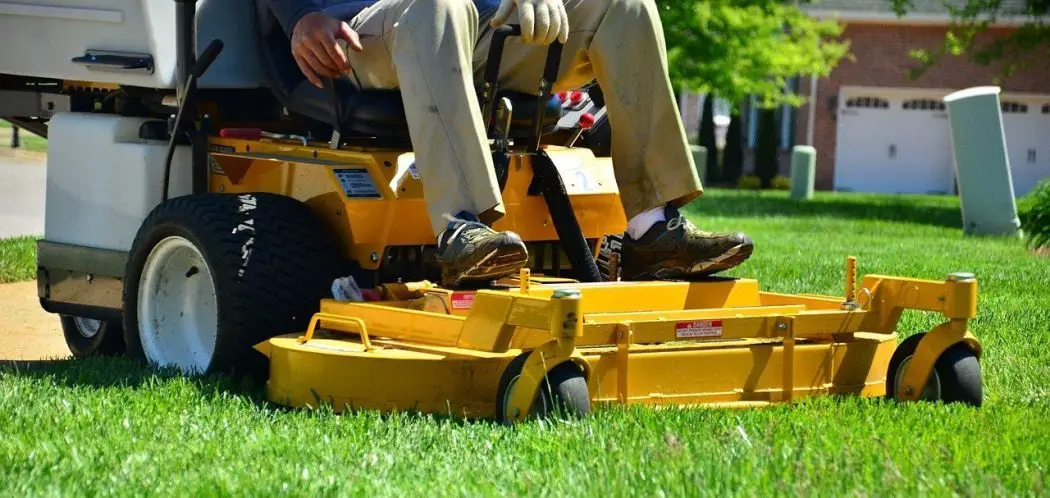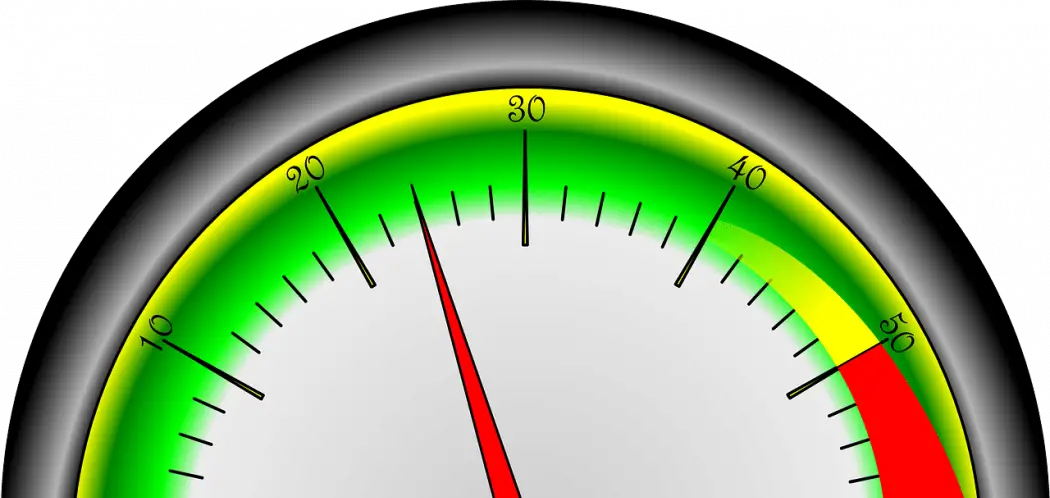Zero turn mowers are the latest and greatest in lawn care technology. These sleek and speedy machines are designed for efficiency, precision, and maximum maneuverability, making them the go-to choice for homeowners and professionals alike.
Zero turn mowers are basically riding mowers that use a unique steering system to make tight, precise turns without any wasted effort. Instead of turning with the front wheels like a traditional riding mower, zero turn mowers use their rear wheels to pivot around a central point, allowing them to navigate obstacles, edges, and tight corners with ease.
All in all, zero turn mowers are a game-changer when it comes to lawn care. They’re efficient, fun, and precise, and they’re quickly becoming the mower of choice for anyone who wants to save time and get the perfect lawn.
Zero turn mowers can seem intimidating to some people because of their unique steering system, which can take a bit of practice to master. Additionally, their high speeds and maneuverability can make them difficult to control for those who are not used to driving them. However, with some experience and proper training, anyone can learn to operate a zero turn mower safely and efficiently. It’s important not to let fear hold you back from enjoying the benefits of this powerful and versatile piece of equipment.
Are zero turn mowers really hard to drive?
It might be a challenge to learn to control a zero-turn mower for those who are new to driving or operating machinery. However, it’s easy to get comfortable driving a zero-turn mower within a few days with practice and proper training. You need to learn the mechanism of the lever and control the mower by moving it appropriately.
Before you get on a try to mow for the first time, you’ll want to learn about some of the basic mechanisms on this type of mower. You’ll then find it much easier to control.
Parts of a Zero Turn Mower
Here’s a diagram of a zero turn mower from Dirty Hand Tools. Let’s take a look at all the major parts:
- Engine – When it comes to the engine of a zero-turn mower, it’s important to ensure that it has a horsepower of at least 23-26. Anything less than that can make mowing an unpleasant experience. For a consumer-grade zero-turn mower, a 26 hp engine is considered top-of-the-line, while anything above that is usually found in professional-grade mowers.
- Tires – In addition to a powerful engine, the tires on a zero-turn mower need to be well-designed to prevent spinning and ensure proper grip.
- Seat – A comfortable and ergonomic seat is also crucial for a comfortable mowing experience, with the right positioning to ensure easy access to everything while seated on the mower.
- Control Levers – The control levers on a zero-turn mower allow you to move the mower.
- Hand brake – Serves as the main brake.
- Cutting blades – The cutting blade is responsible for efficiently cutting the grass
- Steel deck at the front of the mower is useful for getting on and off the machine.
- Caster wheels – located at the front of the mower, rotate 360 degrees to allow for easy maneuverability.
- Foot Pedal – This is used to raise and lower the deck as needed. By paying attention to these key features, you can ensure a smooth and efficient mowing experience with your zero-turn mower.
Let’s take a look at the zero-turn mower operator station. There are typically 5 different things in the operation station:
- Key: The first thing in the operation station you will notice is the key to turn the mower on and off.
- Throttle Handle: When you push it forward, it jumps into full throttle and vice versa.
- Indicators: Shows how many volts. Also, on some advanced models it shows you if the operator is sitting or not and other driver information. Also the indicator also shows if the PTO is engaged or not.
- PTO Switch: Use the electric switch to engage and disengage the PTO shaft.
- Light Switch & Charging Outlet: Most zero turn mowers will have an extra switch for lights and a charging outlet to charge your mobile device.
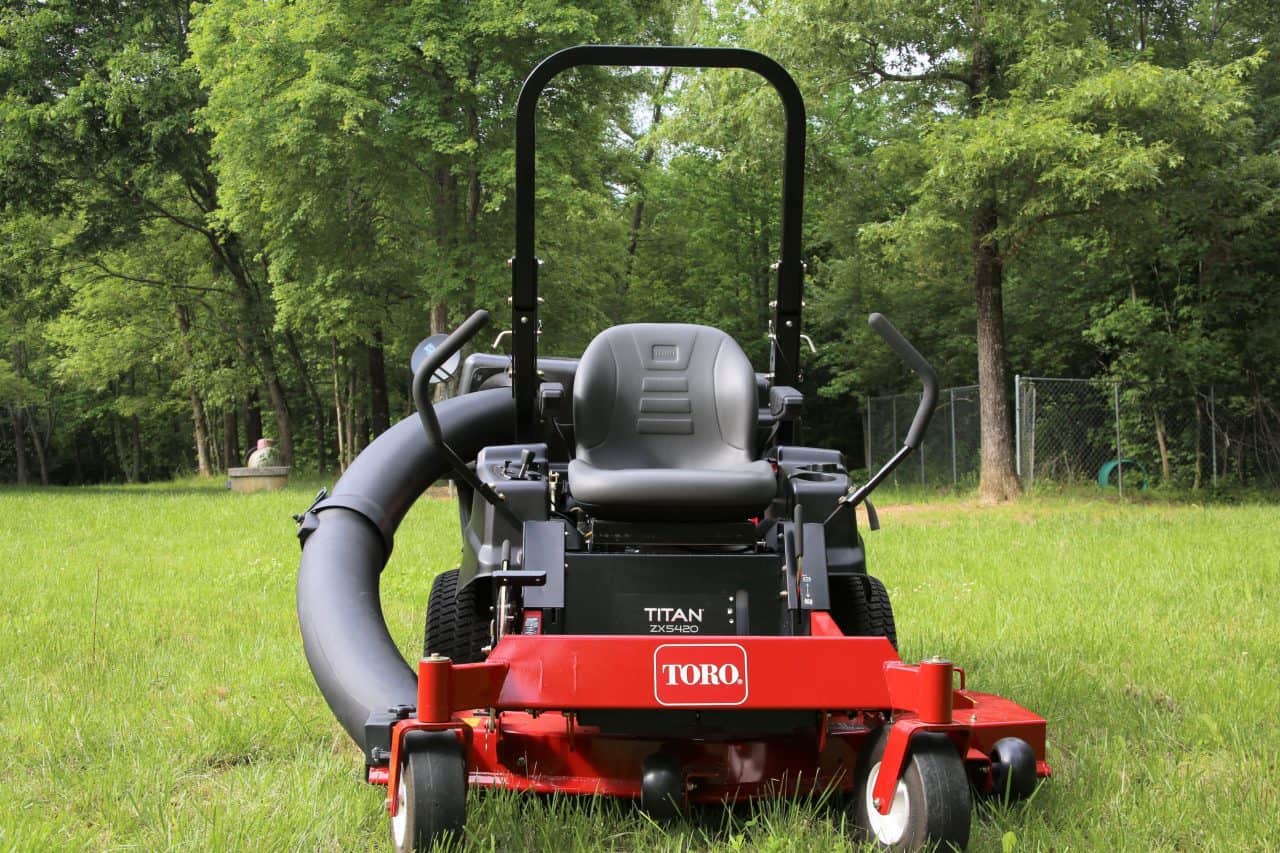
How to Drive a Zero Turn Mower in 10 Easy Steps?
Hopefully you are now a little more familiar with all the parts! If you’ve got a little patience, you’ll have no issues learning to master and control the mower effectively.
Let’s now look at how to actually operate a zero turn mower…
- Before starting the mower, perform a quick inspection to ensure that it is in good working condition, including checking the oil level, tire pressure, and fuel level.
- Take a seat on the mower and make sure you are familiar with all the controls, including the throttle, steering levers, and parking brake.
- Start the mower by turning the key in the ignition or pressing the start button, and allow the engine to warm up for a few minutes before engaging the blades.
- Once the engine has warmed up, disengage the parking brake.
- To move forward, the operator pushes both levers forward equally. To move backward, the levers are pulled back equally.
- To turn, simply push one steering lever forward and pull the other lever backward. The more sharply you push or pull the lever, the tighter the turn will be. To make a right turn, the left lever is pulled back while the right lever is pushed forward. To make a left turn, the opposite is true – the right lever is pulled back while the left lever is pushed forward. By controlling the levers in this way, the mower can turn on a dime without needing to make wide turns or adjustments.
- The speed of the mower is also controlled by the lever system. Pushing the levers forward more will increase the speed, while pulling them back will decrease it.
- If you need to make a U-turn, bring the mower to a complete stop and then use the steering levers to turn the mower around in a tight circle.
- To adjust the cutting height of the blades, use the lever located near the operator’s seat. Move the lever up to raise the cutting height or down to lower it.
- When you are finished mowing, disengage the blades and engage the parking brake before turning off the engine.
How Long Will I Need To Master The Zero Turn Mower Controls?
Overall, I think it’s fair to say that zero turn mowers are pretty straightforward to drive. The speed, controls and responsiveness of each particular model are the hardest things to master but they are not particularly difficult.
For most people, it should 30-40 minutes to master the controls of a zero turn mower. If you have no driving experience and you have never used a riding mower before, it could take slightly more time and patience to learn to operate one.
People generally find it easy to drive a zero turn mower forwards and backwards, however they may face difficulties when it comes to turning on a spot.
I’d recommend taking your zero-turn mower to an open grass area for 30 minutes each day to practice. Within 2-3 days, you should be able to drive like a pro.
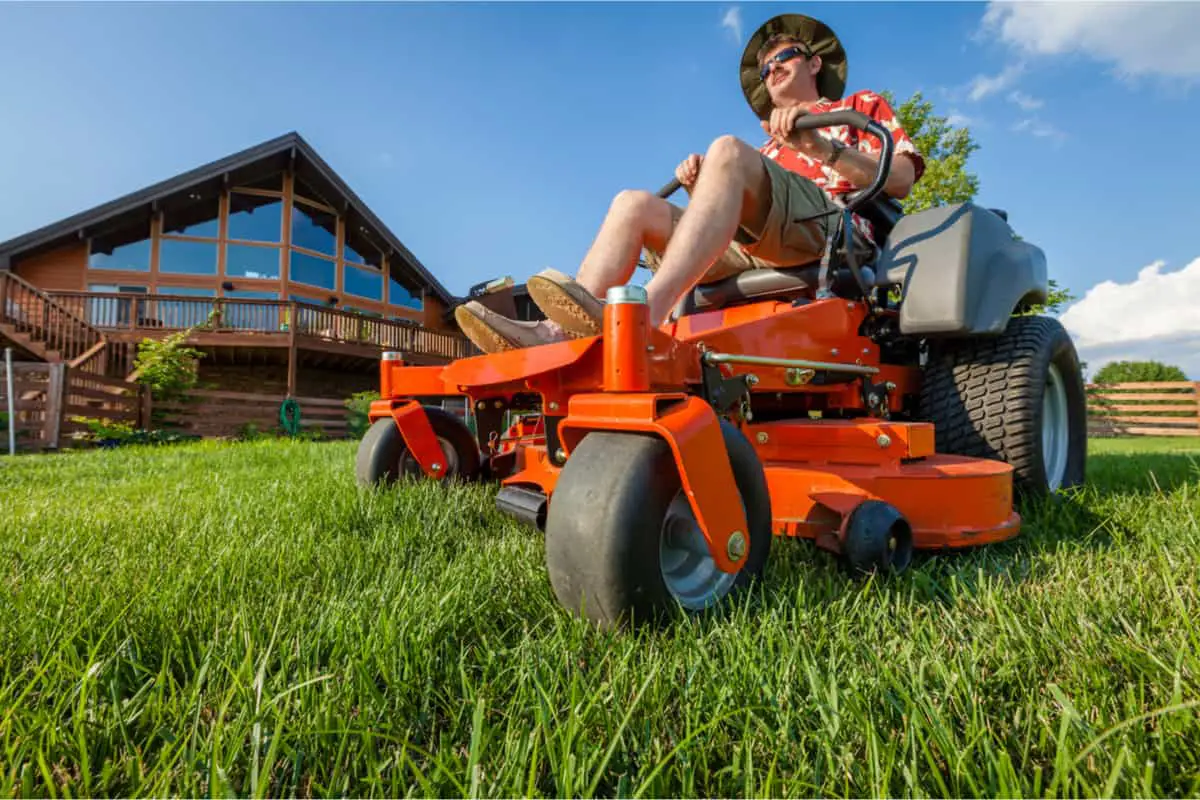
What Is the General Consensus?
Here are some quotes I found from online forums regarding the topic “Are zero turn mowers hard to drive”:
- “I used to think zero turn mowers were difficult to drive, but once I got the hang of it, it was actually really easy. It just takes some practice.” – User “HortRanger” on LawnSite forum
- “I find zero turn mowers to be much easier to maneuver than traditional riding mowers. They turn on a dime and are very responsive.” – User “splattypus” on Reddit
- “Zero turn mowers can be a bit tricky to drive at first, but once you get used to the controls, they are very easy to operate. Just be patient and take your time getting comfortable with it.” – User “JimD” on Homeowners Hub forum
- “Zero turn mowers are not difficult to drive, but they do require more attention and skill than traditional riding mowers. You need to be aware of your surroundings and pay attention to the terrain.” – User “gardengal48” on GardenWeb forum
- “I’ve been using zero turn mowers for years and I find them to be very easy to drive. It just takes a little practice to get the hang of it.” – User CrankyClutch” on The Lawn Forum
What Do the Experts Say?
- “Zero turn mowers take some getting used to, but once you master the steering, they are a breeze to drive. The trick is to learn to steer with your arms, not your hands, and to make small adjustments rather than big movements.” – Dan Mabe, President of The American Green Zone Alliance, as quoted in this article on Green Industry Pros
- “Zero turn mowers are designed to be easy to drive, but there is a learning curve. It’s important to take the time to read the owner’s manual, practice in a safe area, and start out slowly until you feel comfortable with the controls.” – Mike Borschowa, Outdoor Power Equipment Expert, as quoted in this article on Pro Tool Reviews
- “One of the main benefits of zero turn mowers is their maneuverability. However, this also means that they require more skill to operate than traditional riding mowers. If you take the time to learn the controls and practice, you will find that zero turn mowers are not hard to drive at all.” – Steve Willoughby, Lawn Care Expert, as quoted in this article on Backyard Boss
Pretty much all of these people’s opinion align with my own experience and what others have said in the lawn care industry.
Advantages of Zero Turn Mowers
Maneuverability: Zero turn mowers are the champs in this department. They’re like the Olympic gymnasts of lawn care, able to make sharp turns and dodge obstacles with ease. Thanks to their dual-wheel motors, you can control each wheel independently, which means they can pivot on the spot. Riding mowers, on the other hand, have a bigger turning radius and might not be as handy in tight spaces.
Speed: Zero turn mowers got you covered! These babies can zoom around and cover a big area in no time. But if you’re looking for a more leisurely pace, a riding mower might be more your speed. They’re great for more delicate or precise tasks.
Control: With zero turn mowers, you’re the boss. You get to sit lower to the ground and have more control over the machine’s movements. That means more precise steering and better visibility of the mowing area. Riding mowers might give you a higher vantage point, but you’ll be farther from the ground and have less control over the machine.
Check out this video for some quick tips to drive a zero-turn mower
Downsides of Zero Turn Mowers
Now, let’s talk about the downsides of zero turn mowers. While these machines are undoubtedly amazing, they’re not without their drawbacks.
Cost: Zero turn mowers are typically more expensive than traditional riding mowers, making them a bigger investment. However, many people find that the benefits of zero turn mowers outweigh the extra cost, especially if they have a large lawn or want to save time and effort.
Maintenance: Zero turn mowers have more moving parts than traditional mowers, which means there’s more to maintain and repair. Regular maintenance is crucial to keep your mower running smoothly, and repairs can be expensive if something goes wrong.
Learning curve: Alright, now let’s talk about the learning curve. Zero turn mowers might take some getting used to because their dual-wheel motors require a different driving style than a traditional riding mower. But once you get the hang of it, you’ll be mowing like a pro! Riding mowers might be easier to learn since they have a more traditional steering mechanism.
Sometimes unsuitable: Some people may find that zero turn mowers aren’t suitable for their specific lawn care needs. For example, if you have a very small lawn, a zero turn mower may not be necessary, and a traditional push mower may be a more cost-effective choice.
Other Potential Difficulties With Zero-Turn Mowers
- Repairs can be costly – if something goes wrong, it can be expensive to fix. This is especially true if you don’t know how to repair it yourself and have to rely on a professional to do it for you.
- Zero turn mowers are expensive to buy – They are more expensive than traditional mowers, which can be a deterrent for some people. However, the additional cost is often justified by the increased efficiency and speed of a ztr, making it a good investment for those who have large areas to mow.
- They can be loud – zero-turn mowers tend to be louder than other types of mowers, which can be a nuisance for some users.
- They don’t do well with wet grass – they don’t do well with wet grass, which means you’ll have to wait for your lawn to dry out before you can use your ztr.
- There is no pedal brake – Another potential challenge is that zero-turn mowers do not have a pedal brake. Instead, they rely on the hand brake as the main brake, which can take some getting used to for those who are used to using a pedal brake.
- They consume a good amount of fuel – it’s worth mentioning that zero-turn mowers consume a good amount of fuel, so you’ll need to factor that into your budget when considering purchasing one.
Factors That Affect the Ease of Use of Zero Turn Mowers
Firstly, experience and familiarity with the machine are crucial when it comes to operating heavy machinery like mowers. Without enough experience, you might find yourself struggling to use the machine efficiently and effectively.
Familiarity with the machine also helps you avoid accidents and breakdowns. It’s like driving a car – the more you drive, the more comfortable you get with the vehicle. The same goes for mowers. If you’ve used a particular mower for a long time, you’ll be more efficient at mowing your lawn. That’s why it’s important to stick with a machine you’re familiar with and gain as much experience as you can.
Physical Attributes
The physical attributes of a zero turn mower can have a significant impact on how easy it is to operate. For starters, the weight of the machine can affect how quickly it can turn and how much traction it has on uneven terrain. Heavier mowers may be more stable but can be harder to maneuver in tight spaces.
Similarly, the size of the mower can impact its maneuverability. Larger mowers may have a wider cutting deck, but they can also be more difficult to navigate around obstacles. On the other hand, smaller mowers may be easier to steer but may not be as efficient at cutting large areas.
Finally, steering sensitivity is another factor to consider. While a sensitive steering system can provide greater control and precision, it can also make the mower more challenging to operate, especially for novice users. On the other hand, a less sensitive steering system can make the mower easier to control but may sacrifice some maneuverability.
Overall, it’s important to consider the physical attributes of a zero turn mower when choosing the right machine for your needs. By finding a mower that strikes the right balance between weight, size, and steering sensitivity, you can ensure that you have the best possible experience when operating your machine.
Terrain, Weather and Obstacles
Operating a zero turn mower can be affected by a variety of factors, including the terrain, weather, and obstacles in the area. Rough, uneven terrain can make it more difficult to control the mower, while wet or slippery conditions can make it harder to maintain traction.
Obstacles such as rocks, trees, or other debris can pose a challenge as well. Navigating around these obstacles requires a skilled operator who can make quick, precise adjustments to the mower’s direction and speed.
Additionally, weather conditions such as wind or rain can impact the operation of a zero turn mower. High winds can make it harder to steer the mower, while heavy rain can affect the mower’s performance and create unsafe conditions for the operator.
14 Tips for Operating a Zero Turn Mower
Here’s a quick overview of best practices for operating a zero turn mower (e.g. starting and stopping, steering, turning)
- Practice making tight turns and backing up in an open area before tackling a larger space.
- Use the deck lift lever to adjust the cutting height and ensure an even cut on your lawn.
- Use the “slow” feature to help maintain control in tight turns or on steep inclines.
- Avoid sudden or jerky movements when starting or stopping the mower to prevent damage to the engine.
- Keep the mower at a consistent speed to avoid uneven cutting and minimize wear on the blades.
- Use a back-and-forth motion to turn the mower rather than spinning in place to prevent unnecessary stress on the machine.
- Keep the mower blades sharp to reduce the need for multiple passes and prevent tearing of the grass blades.
- Avoid mowing on steep inclines or hills, as this can be dangerous and cause loss of control of the mower.
- Use a trimmer or edger to clean up areas that the mower can’t reach, such as around trees or fences.
- Use the zero turn mower in a pattern that allows you to avoid turning sharply or frequently, as this can wear down the tires and damage the lawn.
- Avoid mowing in wet or muddy conditions, as this can cause the mower to slide or get stuck in the mud.
- Use the reverse mode sparingly and only when necessary to avoid damaging the grass or getting stuck in tight spaces.
- When turning, always pivot on the inside rear wheel. This will help you maintain better control of the mower and prevent it from tipping over.
- Always mow in a pattern, rather than randomly. This will help you ensure that you have covered the entire lawn and reduce the likelihood of missing spots or overlapping areas.
Safety Precautions to Keep In Mind
- Familiarize yourself with the controls and read the manual thoroughly before operating the mower.
- Start the mower on a flat surface and avoid abrupt movements to prevent tipping.
- Keep both hands on the steering levers at all times and use your body to shift weight as needed for turning and steering.
- Always mow in a forward direction and avoid sudden stops or reversals, which can cause the mower to skid.
- Be aware of obstacles, including trees, rocks, and other objects that could damage the mower or cause injury.
- Adjust the mower speed according to the terrain and weather conditions to ensure safe and efficient mowing.
- Take regular breaks to prevent fatigue and maintain alertness while operating the mower.
- Perform regular maintenance, including cleaning and sharpening blades, checking fluid levels, and inspecting the mower for any signs of wear or damage.
- Wear appropriate safety gear, including closed-toe shoes, eye and ear protection, and long pants, to protect yourself while mowing.
The Verdict
While zero turn mowers may look intimidating, they’re actually quite easy to operate. With their unique steering system and responsive controls, they provide greater control and precision than traditional riding mowers.
Zero turn mowers are quickly becoming the go-to choice for homeowners and professionals looking for efficiency, speed, and precision in lawn care. Just make sure to take your time to learn the lever-controlling mechanism and you’ll be fine!
Zero turn mowers are actually pretty fun to drive and it’s much easier to mow a large area when using one of these. I find a grass trimming session with a zero turn to be pretty therapeutic. They’re far quicker than any type of mower which is why people that run lawn care businesses will choose to run one of these mowers.
Please remember to complete the precautionary steps before driving! As long as you ensure you are familiar with the emergency brake so that you can immediately stop the mower, you should be good to go.

